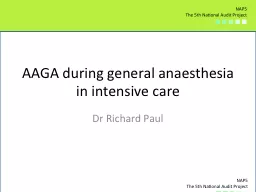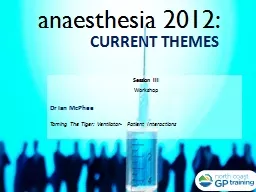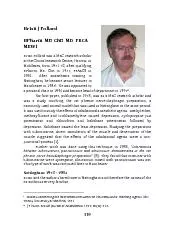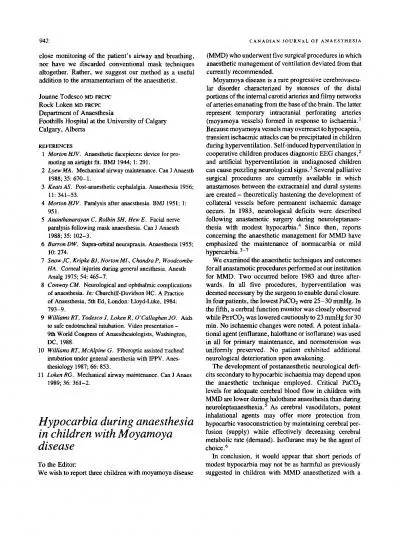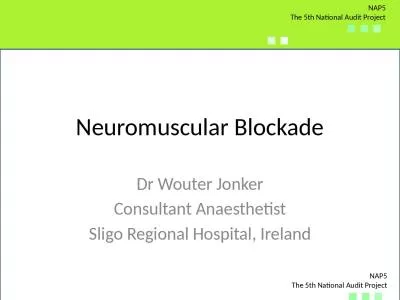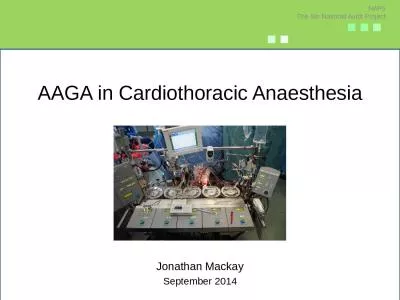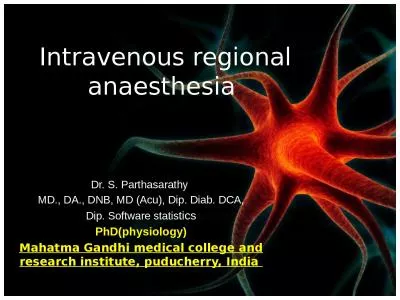PPT-AAGA during general anaesthesia in intensive care
Author : everfashion | Published Date : 2020-06-15
Dr Richard Paul Background Critical illness increases the complexity of anaesthesia General anaesthesia should be expected for surgical and airway procedures
Presentation Embed Code
Download Presentation
Download Presentation The PPT/PDF document "AAGA during general anaesthesia in inte..." is the property of its rightful owner. Permission is granted to download and print the materials on this website for personal, non-commercial use only, and to display it on your personal computer provided you do not modify the materials and that you retain all copyright notices contained in the materials. By downloading content from our website, you accept the terms of this agreement.
AAGA during general anaesthesia in intensive care: Transcript
Download Rules Of Document
"AAGA during general anaesthesia in intensive care"The content belongs to its owner. You may download and print it for personal use, without modification, and keep all copyright notices. By downloading, you agree to these terms.
Related Documents

